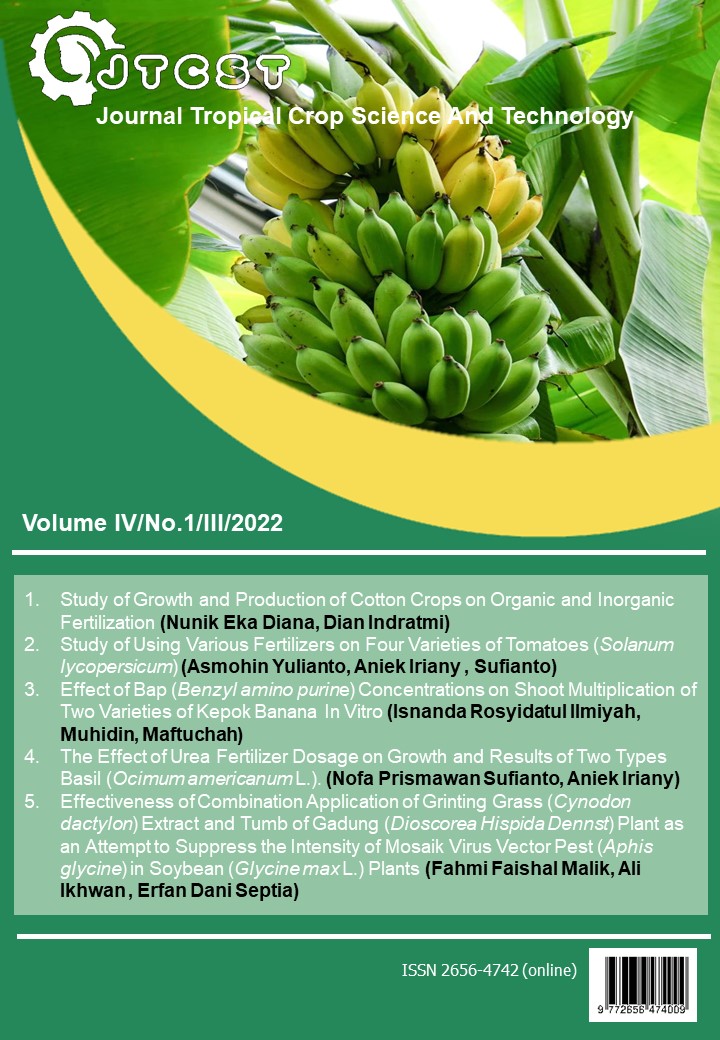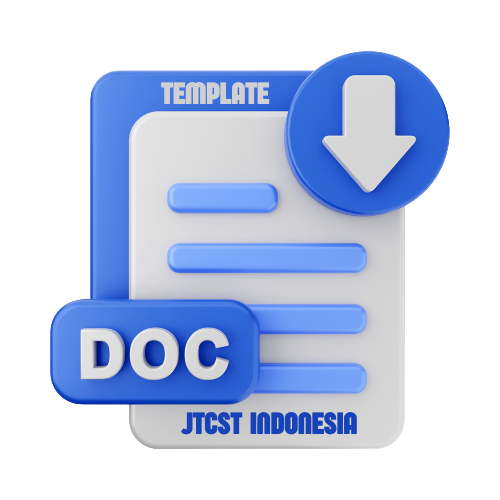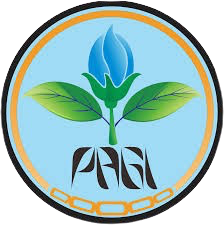Effect of Bap (Benzyl amino purine) Concentrations on Shoot Multiplication of Two Varieties of Kepok Banana In Vitro
DOI:
https://doi.org/10.22219/jtcst.v4i1.29747Keywords:
Banana, Shoots, BAPAbstract
Banana production in Indonesia has decreased due to the lack of availability of healthy seeds. The purpose of this study was to determine the effect of BAP on the multiplication of two banana varieties (Kepok Manurun and Kepok Unti Sayang) by in vitroculture. This study used a completely randomized design (CDR) in a factorial manner with 2 factors. The first factor was the banana variety (Kepok Manurun and Kepok Unti Sayang), the second factor was the concentration of BAP ZPT (0, 1, 2, 3) with 4 replications where each replication consisted of 4 samples, each bottle was planted with 1 plantlet for a total of 128 bottles. The results showed that the concentration of BAP did not affect the multiplication of two kepok banana varieties in vitro. The BAP concentration of 2 ml/l produced the highest number of shoots of 1,91 shoots, the concentration of BAP of 1 ml/l produced the highest number of leaves of 1,52 leaf, while the concentration of BAP 0 ml/l or without BAP result in the highest plant height of 1,05 cm. While the highest number of roots was found in the BAP treatment of 1 ml/l, the number of root tips, the highest root length was found in the BAP treatment 0 ml/l, while the concentration of BAP 2 ml/l produced the highest number of tillers of 1,39 tillers, and the concentration BAP 1 ml/l resulted in a stem diameter of 3,98 cm
Downloads
References
Badan Litbang Pertanian. 2016. Kepok Tanjung, Pisang Tanpa Jantung. Tersedia online di http:/www.litbang.pertanian.go.id/info-teknologi/2580/ [25 April 2016].
Badan Pusat Statistik Pertanian (BPSP). 2017. Data Hortikultura : Kementrian Pertanian. Tersedia online di http:www.pertanian.go.id/ap_pages/mod/datahorti. [14 Maret 2018].
Bharati, K., Muneshwar Prasad, Hidayatullah Mir, and Awadhesh Kumar Pal. 2018. In Vitro Regeneration and Acclimatisation of Banana cv. Malbhog. Current Journal of Applied Science and Technology. Vol 31(4): 1-6.
Bella D.R.S., E. Suminar, A. Nuraini, dan A. Ismail. 2016. Pengujian Efektivitas Berbagai Jenis Dan Konsentrasi Sitokinin Terhadap Multiplikasi Tunas Mikro Pisang (Musa paradisiaca L.) Secara In Vitro. Jurnal Kultivasi. Vol.15 (2). pp: 74-80.
Budi, R.S. 2020. Uji Komposisi Zat Pengatur Tumbuh Terhadap Pertumbuhan Eksplan Pisang Barangan (Musa paradisiaca L.) pada Media MS Secara In Vitro. Journal Biology Education, Science & Technology. Vol. 3 No. 1. Hal. 101-111. ISSN: 2614-8064.
Djumat, J.L. 2014. Multiplikasi In Vitro Samama (Anthocephalus macrophyllus (ROBX).HAVIL) Melalui Tunas Pucuk dan Tunas Aksilar. Program Studi Kehutanan Fakultas Pertanian UNIDAR Ambon.
George, E.F. and P.D. Sherrington. 1984. Plant Propagation by Tissue Culture. Handbook and Directory of Commercial Laboratories. Exegetic Ltd. England.
Habib, S. E., Mohamed S.M. Ali, E.M. Qaoud, and Amr I. Allam. 2016. Effect of Medium and Cytokinin Types on Banana Micropropagation during Multiplication Stage. Hortscience Journal of Suez Canal University. Vol 5(1) : 1-7.
Hartoyo, R. D., Ellok Dwi Sulichantini, and Eliyani. 2018. The Effect of Kinetin Concentration on Eucalyptus pellita F. Muell Micro Cutting Growth (In Vitro). Agroekoteknologi Tropika Lembang, 1 (1), pp. 34-37.
Isbiyantoro, D., Tri Harwati, dan J.M. Sri Hardiatmi. 2015. Pengaruh Konsentrasi Zat Pengatur Tumbuh (IAA, Root Up, dan Gibgro-20T) Terhadap Pertumbuhan Jahe (Zingiber officinale Rosc.). Jurnal Inovasi Pertanian, 14(1), pp : 21-31.
Lestari. G. Endang. 2011. Peranan Zat Pengatur Tumbuh dalam Perbanyakan Tanaman melalui Kultur Jaringan. Jurnal AgroBiogen. Vol 7(1):63-68.
Mante, S. and H.B. Tropper. 1983. Propagation of Musa Textile Nee. Plant From Apical Meristem Slice In Vitro. Plant Tissue Culture Two Edition.
Mardhikasari, S., Ahmad Yunus, and Samanhudi. 2020. Modification of Media for Banana In Vitro Propagation with Foliar Fertilizer and Coconut Water in cv. Raja Bulu. Caraka Tani: Journal of Sustainable Agriculture. Vol 35(1) 23-32.
.Ngomuo, M., E. Mneney, and P. Ndakidemi. 2013. The Effect of Auxins and Cytokinin on Growth and Development of (Musa sp.) Var. “Yangambi” Explanted in Tissue Culture. American J. Plant Sciences 4: 2174-2180.
Nisa, C. dan Rodianah. 2005. Kultur Jaringan Beberapa Kultivar Buah Pisang (Musa paradisiaca L.). Jurnal Bioscience 2 (2), Banjarbaru.
Nofiyanto, R. T., Florentina Kusmiyati, dan Karno Karno. 2019. Peningkatan Kualitas Planlet TAnaman Pisang Raja Bulu (Musa paradisiaca) dengan Penambahan BAP dan IAA pada media Pengakaran Kultur In Vitro. Journal of Agro Complex, 3 (3), pp. 132-141.
Pamungkas, S. S. 2015. Pengaruh Konsentrasi NAA dan BAP Terhadap Pertumbuhan Tunas Eksplan Tanaman Pisang Cavendish (Musa paradisiaca L.) Melalui Kultur In Vitro. Journal Gontor AGROTECH Science, Vol.2 No.1.
Prayoga, L. 2009. Pengaruh Media dan Konsentrasi BAP terhadap Pertumbuhan Tunas Mikro Pisang Raja secara In Vitro. AGRITECH. Vol XI. Hal 96-106.
Qamar, M., S.T. Qureshi, I.A. Khan, and S. Raza. 2015. Optimization of In Vitro Multiplication for Exotic Banana (Musa spp.) In Pakistan. African J. Biotech. 14(24):1989-1995..
Rismanto, Eko. 2005. Pengaruh Macam Sitokinin dan Konsentrasi IAA Terhadap Perkembangan Eksplan Pisang Cavendish (Musa paradisiaca L.). Skripsi. Fakultas Pertanian. UST, Yogyakarta.
Saleh, M. 2017. Pisang Kepok “Manurun” Unggul Lokal Kalimantan Selatan Adaptif Lahan Rawa. Balittra.litbang.pertanian.go.id.
Sariamanah, Wa Ode Sitti., Asmawati Munir, dan Ahdiat Agriansyah. 2016. Karakteristik Morfologi Tanaman Pisang (Musa paradisiaca L.) Di Kelurahan Tobimeita Kecamatan Abeli Kota Kendari. J. AMPIBI 1(3) hal. (32-41).
Sari, D.A., Slameto, dan Didik Pudji Restanto. 2014. Induksi Tunas Kentang (Solanum tuberosum L.) Menggunakan BAP (Benzil Amino Purine). Berkala Ilmiah Pertanian 1(1). pp : 2-4.
Sari, D. I., Suwimen, and Nasril Nasir. 2015. The Effect of Thidiazuron (TDZ) and Activated Charcoal Concentration on Shoot Sub Culture of Kepok Banana (Musa paradisiaca L.). Online Journal of Nature Science, 4(3) 280-289.
Semangun. 1991. Penyakit-penyakit Tanaman Hortikultura di Indonesia. Gadjah Mada Press. Yogyakarta. pp : 554-560.
Strosse, H., I. Van den Houwe, and B. Panis. 2004. Banana Cell and Tissue Culture: Cellular, Molecular Biology and Induced Mutations. Polymouth, U.K.: Science Publishers Inc, pp : 1-12.
Suhartanto, M. R., Sobir, dan Heri Harti. 2012. Buku Ajar. Teknologi Sehat Budidaya Pisang : dari Benih Sampai Pasca Panen. Pusat Kajian Hortikultura Tropika. LPPM-IPB. Bogor. pp : 4-5.
Sukowardana, A., Kushendarto, dan Rugayah. 2015. Pengaruh Jenis Bonggol dan Konsentrasi Ba terhadap Pertumbuhan Vegetatif P pada Tanaman Pisang Kepok Manado. Jurnal Penelitian Pertanian Terapan. Vol 15 (3): 167-173. ISSN 1410-5020.
Supriati, Y. 2010. Efisiensi Mikropropagasi Pisang Kepok Amorang melalui Modifikasi Formula Media dan Temperatur. Jurnal AgroBiogen 6 (2):91-100.
Suswono. 2010. Pelepasan Pisang Kepok Unti Sayang sebagai Varietas Unggul. Keputusan Menteri Pertanian.
Tilaar, W., J. Rantung, dan S. Tulung. 2015. Induksi Tunas dari Nodul Krisan Kulo dalam Media Murashige dan Skoog yang Diberi Sitokinin. Eugenia Volume 21 No. 2.
Wattimena, G.A. 1992. Bioteknologi Tanaman. Departemen Pendidikan dan Kebudayaan. Dirjen Pendidikan Tinggi Pusat Antar Universitas Bioteknologi. IPB. Bogor.
Widyastuti, N. dan D. Tjokrokusumo. 2006. Peranan Beberapa Zat Pengatur Tumbuh (ZPT) Tanaman pada Kultur In Vitro. Jurnal Sains dan Teknologi BPPT 3(5) : 08.
Yatim, H. 2016. Multiplikasi Pisang Raja Bulu (Musa paradisiaca L. AAB group) pada Beberapa Konsentrasi Benzyl Amino Purine (BAP) Secara In Vitro. J Agroteknologi. 4(3): 1989-1995.
Zebua, D., S, Rahayu dan H. Saleha. 2015. Induksi Tunas Pisang Barangan (Musa acuminate L.) Asal Nias Utara Melalui Kultur Jaringan dengan Pemberian 2,4-D dan Kinetin. Jurnal Biosains 1(2): 1-5.
Downloads
Published
How to Cite
Issue
Section
License
Copyright (c) 2022 Isnanda Rosyidatul Ilmiyah, Maftuchah, Muhidin

This work is licensed under a Creative Commons Attribution-ShareAlike 4.0 International License.
Authors who publish with this journal agree to the following terms:
- Authors retain copyright and grant the journal right of first publication with the work simultaneously licensed under a Creative Commons Attribution License that allows others to share the work with an acknowledgement of the work's authorship and initial publication in this journal.
- Authors are able to enter into separate, additional contractual arrangements for the non-exclusive distribution of the journal's published version of the work (e.g., post it to an institutional repository or publish it in a book), with an acknowledgement of its initial publication in this journal.
- Authors are permitted and encouraged to post their work online (e.g., in institutional repositories or on their website) prior to and during the submission process, as it can lead to productive exchanges, as well as earlier and greater citation of published work (See The Effect of Open Access).











